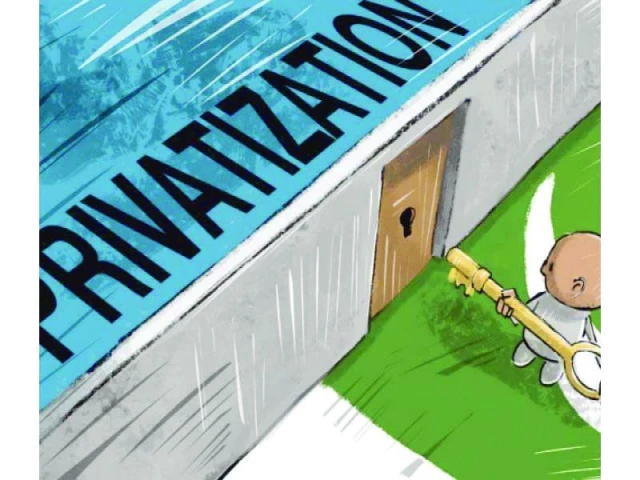Can privatisation cause transformation?
Whole process is susceptible to failure if loss-making enterprises are prioritised

The recently released Prime Minister's Economic Transformation Agenda rightly acknowledges that "many state-owned enterprises (SOEs) – some heavily loss-making – continue to be on the books of the government. Cumulative losses from loss-making SOEs were $3.7 billion (1% of GDP) in FY21 and $2.9 billion (0.9% of GDP) in FY22. These SOEs not only impose a high and unnecessary fiscal cost but also harm economic efficiency by employing workers and using capital and market opportunities out of which efficient private sector firms could be making productive use."
Correct diagnosis is half the treatment already, and in that respect, the authors of the Prime Minister's Economic Transformation Agenda and Implementation Plan deserve appreciation. However, the other half is the solution, including the political commitment.
The document repeats the old mantra of privatisation of loss-making commercial SOEs on a priority basis. The failure of Pakistan International Airlines (PIA) privatisation is a case in point. By prioritising loss-making enterprises, we make the whole process susceptible to failure.
Privatisation is a complex process, and it is admirable that the government has reassured its commitment to privatisation through its recent announcements. It should start by developing a comprehensive policy framework for privatisation.
We propose that the privatisation process should begin by offering profit-making commercial SOEs first. We identified four categories of commercial SOEs in our proposal.
The commercial SOEs earning profit for the government must be put on the top of the list of SOEs to be privatised instead of keeping them as profit earners. They, like a magnet, will attract prospective buyers, and that not only will set the pace of privatisation of the SOEs but restore the trust in the domestic and foreign investors that the government is not interested in doing business and that it wants to see the private sector thrive and flourish.
There are some state-owned enterprises which are performing relatively well with mixed financial performance yet with strong business prospects. The government should follow strategic divestment by offering shares to qualified private sector players with the goal of bringing in productivity gain, professional management and improvement in profitability. Strategic divestment should be coupled with management control by the private investors.
There are some SOEs that have outlived their utility in terms of core business objective but have valuable assets including land on their balance sheet. Asset stripping should be allowed to realise their commercial value and proceeds should be used to settle liabilities.
The land can be re-notified and disposed of either by sale through auction or can be leased in case a viable business plan is proposed by the private sector. The land can also be allotted to the provincial government.
Finally, there are enterprises in mature industries but reporting consistent financial losses which should be fully privatised either through an open auction or a negotiated sale with qualified buyers in the same sector.
There are additional measures which are needed, some of them outlined here.
The Privatisation Commission should take qualified buyers into confidence and share relevant sensitive corporate information prior to asking them to submit binding offers. Appropriate non-disclosure agreements should be signed with potential bidders before sharing sensitive corporate data. This will help in building confidence among potential investors and will increase the chances of successful transactions.
In the case of privatisation of a CSOE where it is a monopoly, the privatisation must not result in a change of hands only from the public to private sector (like the example of K-Electric). The government must ensure that the sector is already deregulated and liberalised on a priority basis.
Job loss is a significant concern during and after privatisation, necessitating comprehensive strategies to support affected employees. Various policy options for retrenched employees are as follows, which can be adopted on a case-to-case basis:
One – Offer equity at a price determined by the Privatisation Commission. Two – Voluntary redundancy package like a golden handshake scheme. Three – Where necessary, the services of deserving employees may be placed under the federal government till their retirement.
By adopting a carefully deliberated policy and a practical mechanism, the government can ensure the success of privatisation, which will reduce fiscal deficit, and will unleash competition as well as opportunities for private sector investment.
THE WRITER IS EXECUTIVE DIRECTOR OF THE POLICY RESEARCH INSTITUTE OF MARKET ECONOMY (PRIME), AN INDEPENDENT ECONOMIC POLICY THINK TANK


















COMMENTS
Comments are moderated and generally will be posted if they are on-topic and not abusive.
For more information, please see our Comments FAQ